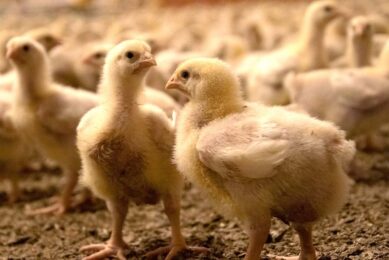Poultry nutrition in the future
The price of feedstuffs, the growing world population and consumer issues are affecting global agricultural businesses. This does not mean that these changes pose a threat to the poultry industry? Solutions lie in being flexible, creative and open-minded. Only then can the poultry industry remain profitable in the future. In terms of nutrition, what will be the issues that change the way we feed our chickens today and in 25 years time? And are we feeding the same type of chicken?
At a recent meeting organised by Biomin, Randy Mitchell from Purdue Farms in the US gave a clear overview of the trends to be expected for the North American poultry industry. “In today’s global market place, competitors are harder to identify and consumers are more selective than ever”, Mitchell said. He explained further that the future success of the poultry industry depends on its ability to improve efficiency, navigate changes in the regulatory environment and meet demands of consumers and society in general.
Feeding crap?
In terms of diet formulation – as you all might know – the use of ethanol by-products has made a tremendous jump over the last few years. The US poultry industry has been blessed with ample amounts of corn grown mostly in the Midwest Corn Belt. Biofuel plants have been popping out of the ground like crazy, creating a new product for use in animal diets: Dried Distillers Corn with Solubles, aka DDGS.
This by-product has been slowly introduced into poultry diets over the last five years, but this pace has increased sharply over the last year. Other by-products such as glycerin from biodiesel production are used locally, but have not made it to the mainstream (yet). While acceptance of these products by nutritionists is still mixed, there is little doubt that these products will be part of the solution to fill the void of corn. A pending issue is getting the quality of the product at a consistent level. No wonder, biofuel companies call it by-products. For them it is waste and they are not interested in the further use of the product.
So are we feeding crap to our chickens then? I don’t think so….DDGS seems to have nutritional value but compared to other animal species, the product has less value in poultry because of their inability to utilize the fibre. Also mycotoxins need to be watched when using such by-products.
Enzymes
The main goal in broiler production is to maximise the enormous growth potential of the bird, resulting in high bodyweight and high breast meat yield. Many shifts in production have taken place over the last few years to shift the broiler industry in particular to lower energy diets including:
- focus on breast meat yield including moving to high yield breeds;
- improved housing that may reduce the response of feed energy in warmer climates; and
- increased cost of supplementing dietary fat.
The rise in feed fat costs combined with improved efficiency and lower manufacturing cost of feed enzymes has dramatically increased the use of NSP (non-starch polysaccharides) type enzymes in all segments of the poultry industry. This evolution has been aided by improvements in thermostable coatings of dry enzymes and low cost post-pelleting liquid enzymes application systems. Phytase (an enzyme that can break down the undigestible phytate in grains and oil seeds and thus release digestible phosphorus) is now widely used in all segments of the poultry industry. A shortage of feed phosphates has even forced some producers to increase the use of phytase beyond the traditional parameters. Currently, competition in the phytase market and high prices for feed phosphate has made this an economically viable alternative. Whether this is still the case in 25 years from now remains to be seen.
Going natural
A trend that will certainly continue in the coming 25 years is the growing popularity to make everything natural and sustainable. The use of antibiotic growth promoter (AGP) feed additives have been banned in Europe since 2006 and in North America their use has been reduced over the last few years. The reason for the reduction in these products is largely consumer driven and is led by companies with branded poultry products. The complex interaction between feed, gut microbiota and the host animal also becomes more significant in the future and an increasing number of studies are being conducted to investigate plant extracts on gut health and overall performance. Sustainability on the other hand has been buzzing around for a few years now but will certainly gain more importance for agriculture in the future. Housing systems, waste management systems, slaughtering and further processing are all segments that need to reconsider their share in CO2 pollution and further environmental pollution.
These are just some of the trends; currently present in the poultry industry…Challenges enough for farmers and nutritionists I would think!
Also check my weblog on
AllAboutFeed.net in which I further elaborate on the sustainability issue.
Join 31,000+ subscribers
Subscribe to our newsletter to stay updated about all the need-to-know content in the poultry sector, three times a week.
 Beheer
Beheer








 WP Admin
WP Admin  Bewerk bericht
Bewerk bericht